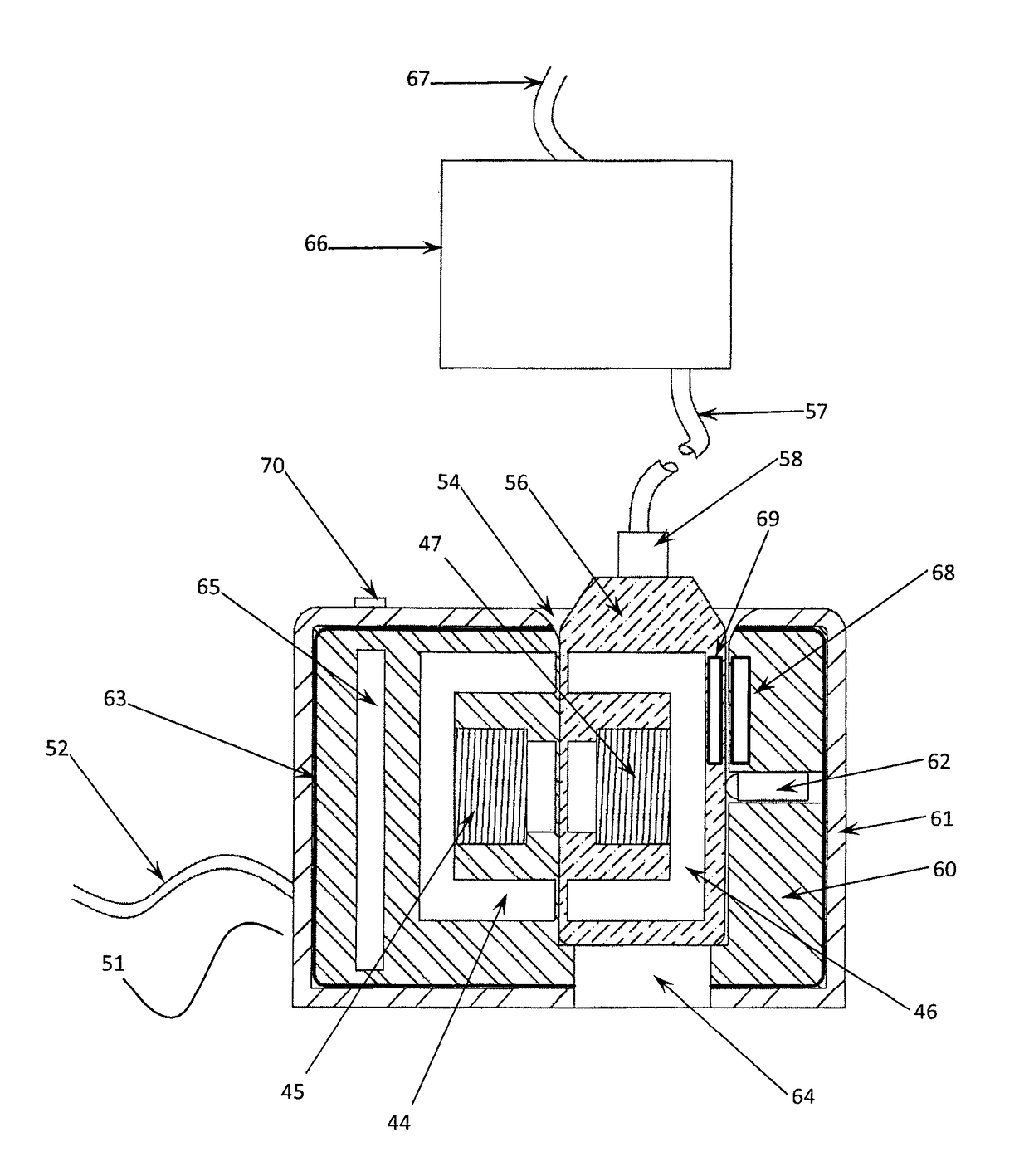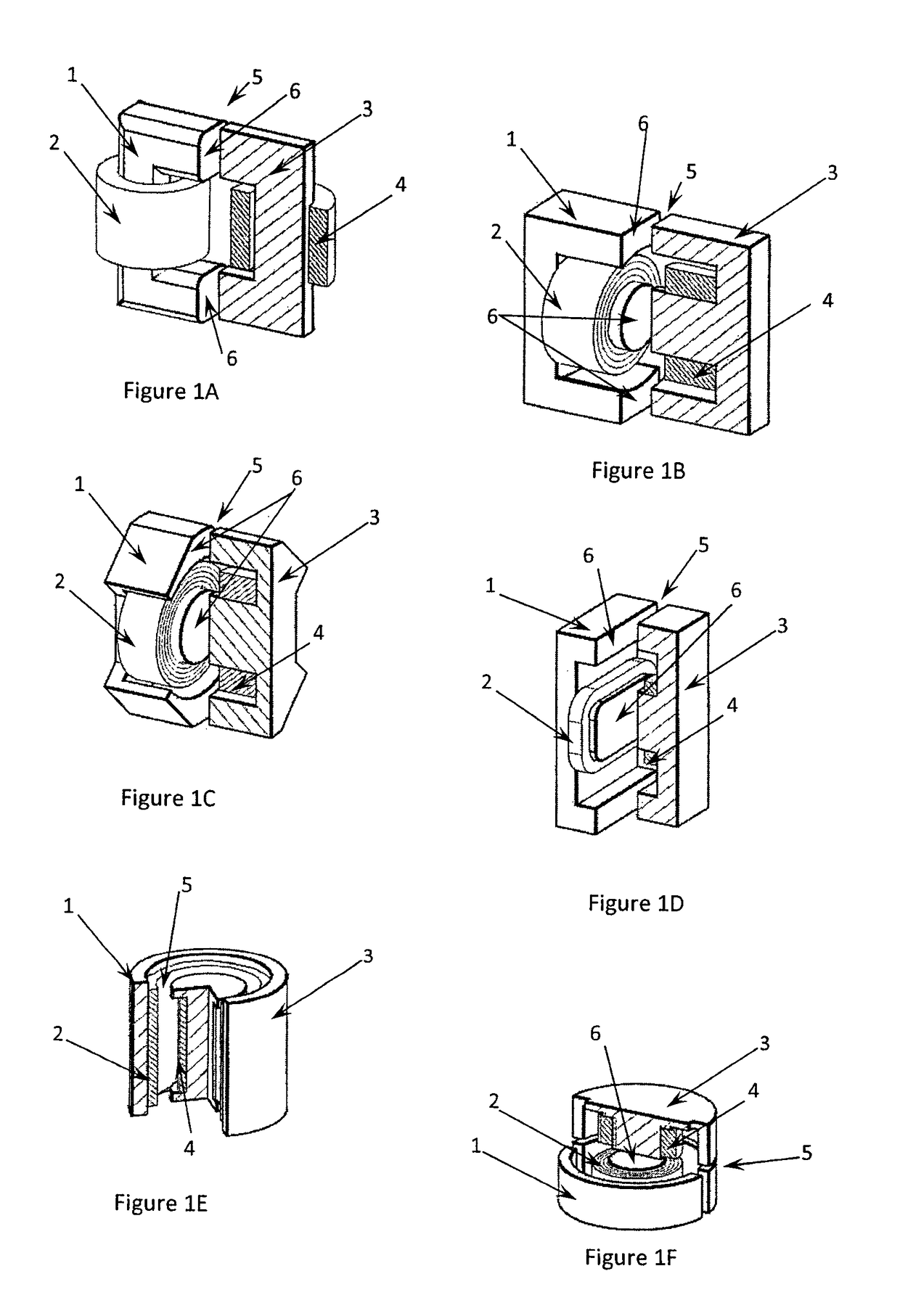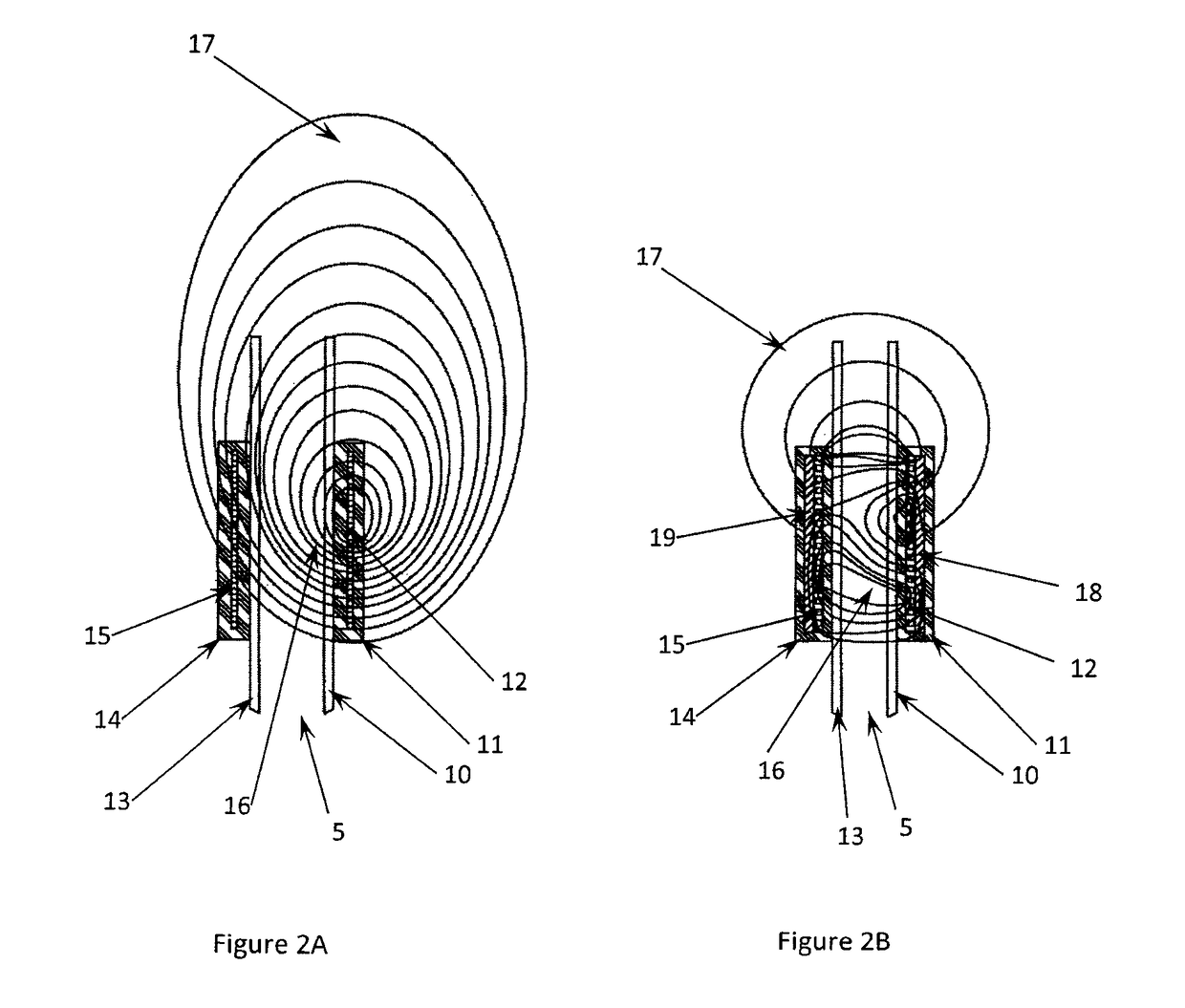Inductively coupled wireless power and data for a garment via a dongle
a technology of inductive coupling and dongle, which is applied in the direction of transmission, electrical equipment, circuit arrangements, etc., can solve the problems of affecting the function of the device, preventing the proper alignment of the primary and secondary coils, and exposing the system to man-made contaminants, so as to reduce the stray magnetic field, and low the effect of the level
- Summary
- Abstract
- Description
- Claims
- Application Information
AI Technical Summary
Benefits of technology
Problems solved by technology
Method used
Image
Examples
Embodiment Construction
Overview of Dongle Charger
[0044]The present invention is an inductive wireless charging system that utilises two separable power ferrite core halves (FIGS. 1A-1F) that form an inductive air core transformer. The system is described as a charger as that is its usual function to provide power to charge a central battery carried by the soldier or user. The system may however be viewed simply as a power transfer system or as a data transfer system, or combination of these. A primary charging unit is attached to a vehicle seat or other support structure and receives electrical power from the vehicle. It contains an inductive power circuit that drives a primary inductive winding that is positioned on a ferrite power core. In one embodiment the ferrite core is located directly adjacent to a receptacle within the primary charging housing such that the pole or poles (legs) or pot of the ferrite core (herein collectively referred to as the ferrite core) align and allow the formation of a subs...
PUM
 Login to View More
Login to View More Abstract
Description
Claims
Application Information
 Login to View More
Login to View More - R&D
- Intellectual Property
- Life Sciences
- Materials
- Tech Scout
- Unparalleled Data Quality
- Higher Quality Content
- 60% Fewer Hallucinations
Browse by: Latest US Patents, China's latest patents, Technical Efficacy Thesaurus, Application Domain, Technology Topic, Popular Technical Reports.
© 2025 PatSnap. All rights reserved.Legal|Privacy policy|Modern Slavery Act Transparency Statement|Sitemap|About US| Contact US: help@patsnap.com



